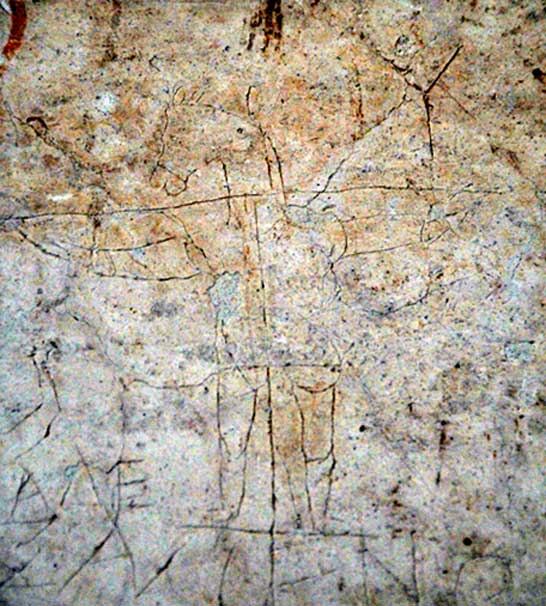
The Colosseum – From Gladiator Fights to Gory Executions and Sea Battles
Gladiatorial fights, sea battles, criminal (and Christian?) executions. These are only a few of the events, if they can even be called such, that happened in the walls of the Colosseum. Known during its initial construction as the Flavian Amphitheater in honor of the first Flavian emperor, the Colosseum quickly made a name for itself as the place to be—rich and poor alike flocked to its stands, regardless of whether or not one could see the actions of the participants in the arena below.
The Monumental Structure
Begun under the imperial rule of Vespasian (69-79 AD), many tourists who visit the Colosseum are unaware of its previous history. Before Vespasian gained power at the end of the Year of the Four Emperors, Nero—adopted son of Claudius—controlled ancient Rome for thirteen years. In this time, the excessively unstable and overtly lavish leader built himself a Golden House, Domus Aurea in the Latin, equipped with grandiose gardens and a man-made lake. After Nero took his own life and threw a wrench in the Roman imperium, General Vespasian eventually gained control. One of the first things to go was the Domus Aurea. The Colosseum now survives where the lake and gardens once stood.

Vespasian. (Shakko/CC BY SA 3.0)
In its place was built a monumental “freestanding structure of stone and concrete, using a complex system of barrel vaults and groin vaults”. Incorporated into this impressive design were recent architectural innovations that have continued to inspire modern architecture. The arches and vaults in particular remain distinct. Further, at the time of its construction, the Colosseum was the largest amphitheater of the Empire, unique in its freestanding status. The theaters of the ancient Greek world were not freestanding, but built into the side of hills; Vespasian ensured the Colosseum was a central and highly exposed feat.
- Complex Elevator and Trap Door System for Raising Wild Animals into the Colosseum Reconstructed
- Colosseum of Rome, a Condominium in Medieval Times
- Red-painted numbers helped Romans find their seats in the Colosseum
Vespasian began the building program three short years into his reign, however he would unfortunately not see it completed. For that matter, his eldest son Titus—heir apparent and completer of the structure—would only live to see the initial beginnings of the Colosseum in action before he died. The life of the Colosseum really flourished under Domitian, Vespasian’s second son and Titus’ heir in lieu of a son.

Sestertius of Titus celebrating the inauguration of the Colosseum, minted in 80 AD. (CC BY SA 3.0)
The Real Events in the Colosseum
So, what truly happened within the Colosseum? The tales of sea battles and executions can be found in various ancient and modern literature, but where does the accuracy stop and the elaboration begin? Well, to the surprise of many, the tales of sea battles are, in fact, accurate. There is evidence remaining within the structure—as well as literary documentation—that the Colosseum was rather easily flooded to allow for such enclosed naval fights (Latin: navalia proelia). The drainage system of ancient Rome has been praised for thousands of years—this is one of the best examples of why.
Also within the walls of the Colosseum were typical hand-to-hand combats between various gladiators, as well as venatio, or staged hunts in which animals from as far as the Near East were imported to hunt or be hunted by the gladiators.
One of the more highly debated aspects of the Colosseum is its use as a stage for Christian martyrdom. While crucifixion graffiti is rampant within ancient Rome (most well-known is the crucifixion of the donkey-man of the Alexmenos graffito), the evidence for this is surprisingly scarce in ancient sources. The primary literature pertaining to this instance is Christian; the Roman literature states that these crucifixions happened at the Circus Maximus or other locations outside the city. Thus, scholarship remains divided on whether Christians did meet an untimely, painful end in the fighting ring.
- Ancient Roman Tunnel from Gladiator Training School to Colosseum set to be Revived
- The Amphitheatre of El Djem: Gladiatorial Arena of Tunisia
- Roman Gladiators Were War Prisoners and Criminals, Not Sporting Heroes

Alexmenos graffito. c. 200 AD. Palatine Museum, Rome, Italy. Photo credit: penelope.uchicago
Diminished Grandeur
Today, when tourists visit the Colosseum, its ancient grandeur is somewhat diminished. The once stunning marble sculptures and façade of the Colosseum were long ago stripped away when building materials were scarce, and what remains looks as much like an empty shell as it is. Outside, costumed gladiators flock about offering pictures with them for a price, taking away what was once a valued form of entertainment. The gladiators might have been slaves, but some of them reached celebrity status. Can it truthfully be said that this prominence is maintained by the costumed teenagers looking to make a summer salary?

French painter Jean-Léon Gérôme depicted gladiators fighting beasts in a 1902 painting. (Public Domain)
The bones of the Colosseum remain an outstanding image of the architectural achievements of the ancient world; its continued existence reveals that even those who “borrowed” the marble valued the core of what the monument once was. That is the legacy Vespasian and Titus left to Rome—a structure that continues to embody the strength and power of ancient Rome in spite of modern “renovations” and somewhat unsuitable tourist traps.

The Colosseum in Rome. Source: BigStockPhoto
Top Image: The Colosseum in Rome, once home to the most brutal games in history. Source: BigStockPhoto
Bibliography
“Alexmenos graffito.” Penelope.uchicago.edu. Accessed November 30, 2017. http://penelope.uchicago.edu/~grout/encyclopaedia_romana/gladiators/graffito.html
"The Amphitheatrum Flavium.” The-colosseum.net. Accessed November 27, 2017. http://www.the-colosseum.net/history/h1.htm
“The Coliseum.” Catholic Encyclopedia. Accessed November 28, 2017. http://www.newadvent.org/cathen/04101b.htm
The Editors of Encyclopædia Britannica. 2017. “Colosseum.” Britannica.com. Accessed November 25, 2017. https://www.britannica.com/topic/Colosseum
Hopkins, Keith and Mary Beard. 2005. The Colosseum. Cambridge: Harvard University Press.
Potter, David Stone. 1999. Life, Death, and Entertainment in the Roman Empire. University of Michigan Press.















